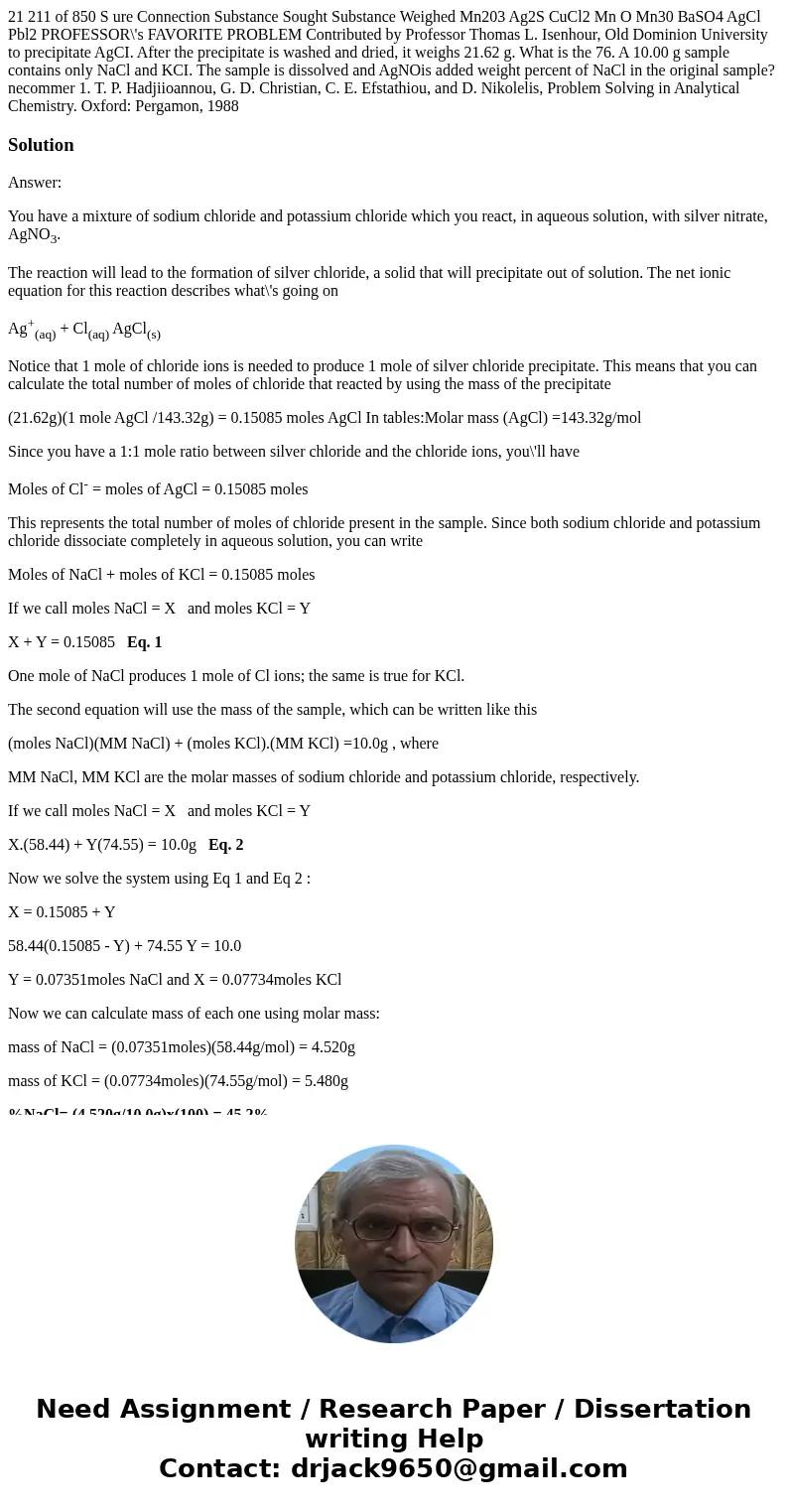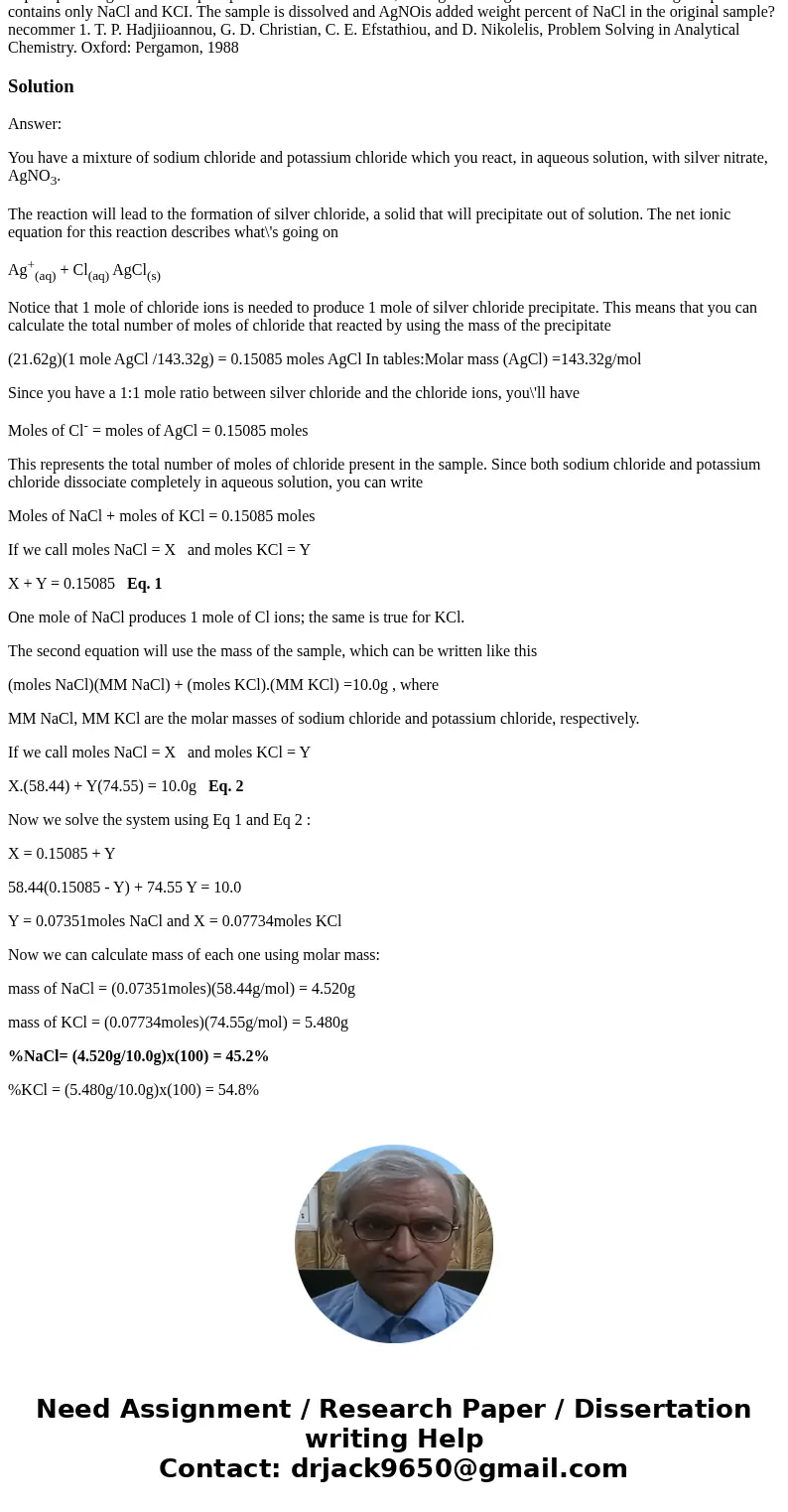21 211 of 850 S ure Connection Substance Sought Substance We
Solution
Answer:
You have a mixture of sodium chloride and potassium chloride which you react, in aqueous solution, with silver nitrate, AgNO3.
The reaction will lead to the formation of silver chloride, a solid that will precipitate out of solution. The net ionic equation for this reaction describes what\'s going on
Ag+(aq) + Cl(aq) AgCl(s)
Notice that 1 mole of chloride ions is needed to produce 1 mole of silver chloride precipitate. This means that you can calculate the total number of moles of chloride that reacted by using the mass of the precipitate
(21.62g)(1 mole AgCl /143.32g) = 0.15085 moles AgCl In tables:Molar mass (AgCl) =143.32g/mol
Since you have a 1:1 mole ratio between silver chloride and the chloride ions, you\'ll have
Moles of Cl- = moles of AgCl = 0.15085 moles
This represents the total number of moles of chloride present in the sample. Since both sodium chloride and potassium chloride dissociate completely in aqueous solution, you can write
Moles of NaCl + moles of KCl = 0.15085 moles
If we call moles NaCl = X and moles KCl = Y
X + Y = 0.15085 Eq. 1
One mole of NaCl produces 1 mole of Cl ions; the same is true for KCl.
The second equation will use the mass of the sample, which can be written like this
(moles NaCl)(MM NaCl) + (moles KCl).(MM KCl) =10.0g , where
MM NaCl, MM KCl are the molar masses of sodium chloride and potassium chloride, respectively.
If we call moles NaCl = X and moles KCl = Y
X.(58.44) + Y(74.55) = 10.0g Eq. 2
Now we solve the system using Eq 1 and Eq 2 :
X = 0.15085 + Y
58.44(0.15085 - Y) + 74.55 Y = 10.0
Y = 0.07351moles NaCl and X = 0.07734moles KCl
Now we can calculate mass of each one using molar mass:
mass of NaCl = (0.07351moles)(58.44g/mol) = 4.520g
mass of KCl = (0.07734moles)(74.55g/mol) = 5.480g
%NaCl= (4.520g/10.0g)x(100) = 45.2%
%KCl = (5.480g/10.0g)x(100) = 54.8%


 Homework Sourse
Homework Sourse